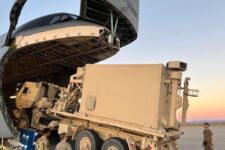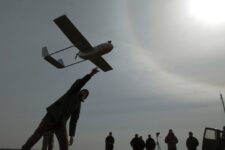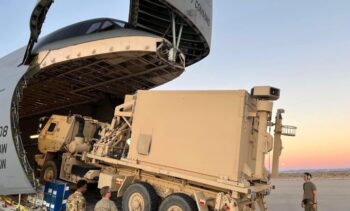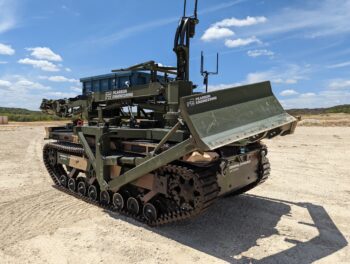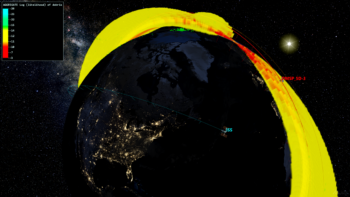
Assistant Secretary of the Air Force for Space Acquisition and Integration Frank Calvelli speaks during the panel discussion “Driving Change with Speed” at the Air and Space Forces Association 2024 Warfare Symposium in Aurora, Colo., Feb. 13, 2024. (U.S. Air Force photo by Eric Dietrich)
WASHINGTON — The Department of the Air Force’s space acquisition head, Frank Calvelli, has certified the design baseline for the Space Force’s program with the National Reconnaissance Office (NRO) to develop a new satellite system to track moving targets on the ground — a decision that allows the program to proceed into formal development.
The Ground Moving Target Indicator (GMTI) program is aimed at helping fill the gap in gathering intelligence, surveillance and reconnaissance (ISR) imagery used to target terrestrial threats left by the Air Force’s divestment of the E-8C Joint Surveillance Target Attack Radar System (JSTARS).
“We held a successful Milestone B review for the GMTI [Ground Moving Target Indicator] program on Friday [Aug. 23], and at that review I officially approved the Milestone B,” Calvelli told Breaking Defense in an email today.
Milestone B is the decision point in the procurement cycle when acquisition managers can attest that program risks have been adequately mitigated to support a commitment to system design, development, and production. It formally sets program cost, schedule, and performance parameters that must be adhered to by service program managers and contractors.
Calvelli’s decision comes after a five-month delay necessary to hash out a reliable cost estimate for the NRO-Space Force development program. That cost baseline, in turn, will drive funding levels in the upcoming Defense Department fiscal 2026 five-year budget request.
Meanwhile, the Space Force, NRO and the National Geospatial Intelligence Agency (NGA) are continuing to work on the contentious issues involved in delineating their respective roles and missions in gathering and disseminating ISR to warfighters, including the operation of the new GMTI satellites, according to senior officials involved.
Gen. Michael Guetlein, deputy chief of the Space Force, said on Wednesday that interagency cooperation on GMTI was one of the subjects of a recent meeting of the Space Executive Committee chaired by NRO Director Chris Scolese and Chief of Space Operations Gen. Chance Saltzman.
The committee, which meets every five months or so, is where NRO and the Space Force “actually sit down and talk about how to collaborate together, how we build get together, how we’re going to operate together,” Guetlein told the 2024 Intelligence & National Security Summit sponsored by the Armed Forces Communications & Electronics Association (AFCEA) and the Intelligence and National Security Alliance (INSA) on Thursday.
A Space Force spokesperson explained that committee meetings “include members of the national security space enterprise, as needed.”
The committee actually was formed “out of the 2016 Space Enterprise Vision, which was a collaborative effort between the Intelligence Community and Department of Defense to closely coordinate on national security issues regarding space,” the spokesperson added. It was further “codified” when the Space Force was established in 2019.
Further, the NGA’s new Joint Mission Management Center (JMMC) funded by the agency to foster cooperative satellite-based ISR collection and decision-making among the 18 members of the Intelligence Community has reached initial operational capability, NGA Director Vice Admiral Frank Whitworth told the summit.
Deploying forward: How the Army’s IBCS unifies missile defense across domains
The Army is using IBCS as the cornerstone of integrated air and missile defense modernization.
The new center was established “as a place to collaborate so that the worlds don’t collide, they actually collaborate,” he said.
